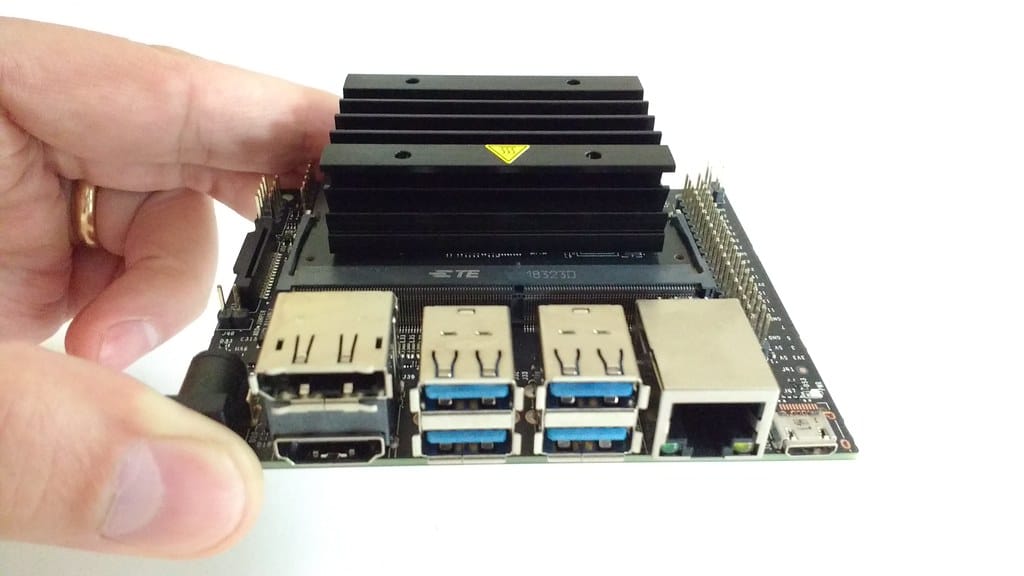Nvidia's 'Robot Brain' Hits the Market: How Jetson Thor is Set to Revolutionize Humanoid Robotics
Nvidia has officially launched its most ambitious robotics computing platform yet – the Jetson Thor, dubbed the company's "robot brain" – marking a pivotal moment in the race to bring humanoid robots from science fiction into everyday reality. This groundbreaking chip promises to give robots the computational power needed for real-time decision making, advanced AI processing, and human-like interaction capabilities.
The Power Behind Tomorrow's Robots
The Jetson Thor represents a quantum leap in robotics computing, packing the equivalent processing power of a high-end gaming PC into a compact, energy-efficient package designed specifically for robotic applications. Built on Nvidia's cutting-edge architecture, the platform delivers up to 800 TOPS (trillion operations per second) of AI performance while consuming just 60 watts of power – a remarkable achievement in computational efficiency.
"We're essentially putting a supercomputer brain into every robot," explained Deepu Talla, Nvidia's Vice President of Embedded and Edge Computing. The Thor platform integrates multiple AI models simultaneously, enabling robots to process vision, speech, navigation, and manipulation tasks in parallel – much like how the human brain coordinates multiple functions.
Real-World Applications Taking Shape
Several major robotics companies have already committed to integrating Jetson Thor into their next-generation humanoid robots. Boston Dynamics, known for their viral robot videos, plans to incorporate the platform into future commercial versions of their Atlas humanoid robot. Meanwhile, Agility Robotics is exploring Thor for their Digit robots, which are already being piloted in Amazon warehouses.
The applications extend far beyond industrial settings. Healthcare robotics companies are eyeing Thor-powered assistants capable of providing elderly care, while hospitality giants are developing service robots that can navigate complex environments and interact naturally with guests. Tesla's Optimus robot program is reportedly evaluating the platform as a potential upgrade to their current computing infrastructure.
Breaking Down the Technical Breakthrough
What sets Jetson Thor apart is its specialized neural processing units optimized for transformer models – the same AI architecture powering ChatGPT and other large language models. This allows robots to understand and respond to natural language commands, reason about their environment, and even engage in contextual conversations.
The platform also features advanced computer vision capabilities, processing multiple camera feeds simultaneously to create detailed 3D maps of surroundings. Combined with proprietary sensor fusion algorithms, robots can navigate unpredictable environments with human-like spatial awareness.
Perhaps most importantly, Thor includes safety-critical computing cores that meet automotive-grade reliability standards. This redundancy ensures robots can operate safely around humans, even if primary systems experience failures.
Market Impact and Industry Response
The launch comes at a time when the global humanoid robotics market is experiencing unprecedented growth. Market research firm IDC projects the sector will reach $17.3 billion by 2028, driven largely by labor shortages and advances in AI capability. Nvidia's entry with a dedicated robotics platform could accelerate this timeline significantly.
Investment in humanoid robotics has surged 300% over the past two years, with venture capital firms pouring $2.8 billion into robotics startups in 2024 alone. Major corporations including BMW, Amazon, and Ford have announced pilot programs testing humanoid robots in manufacturing and logistics operations.
The competitive landscape is heating up as well. Intel recently unveiled its own robotics computing platform, while Google's DeepMind division has made significant breakthroughs in robot learning algorithms. However, Nvidia's established dominance in AI computing gives them a significant head start.
Looking Ahead: The Robot Revolution
The availability of Jetson Thor represents more than just another product launch – it's potentially the catalyst that transforms humanoid robots from expensive prototypes into practical, deployable solutions. Early adopters can expect to see Thor-powered robots in controlled environments within 18 months, with broader commercial deployment following by 2027.
As these "robot brains" become more sophisticated and affordable, we're likely approaching an inflection point where humanoid robots transition from novelty to necessity. The question is no longer whether robots will become commonplace, but how quickly society can adapt to their presence.
For businesses considering robotics integration, Nvidia's Thor platform offers a glimpse into a future where artificial intelligence and physical capability converge to create truly autonomous assistants. The robot revolution isn't coming – it's already here, and it just got a major upgrade.
